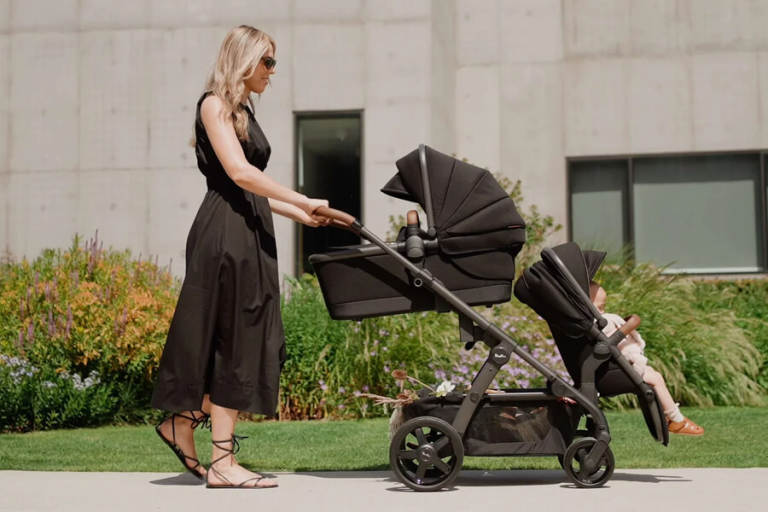
RWU UAR
Sometimes life feels like a fast-flowing river. There are so many things to do, so many messages to respond to, and so many thoughts running through our heads. It’s easy to feel disoriented, overwhelmed, or as if you’re just rushing from one duty to the next without enjoying it. What if there was a simple, friendly way to help you feel more in control and enjoy your daily life?
Let me introduce you to a procedure known as RWU UAR.
You might now be puzzled by these letters as you look at them. Don’t worry! It’s an acronym for a very gentle and powerful idea: Relax, Wait, Understand, Unlock, Act, Reflect.
This is not a complicated set of rules. It’s more like a friendly map for your mind. It gives you a step-by-step way to handle your days, your tasks, and even your worries. Whether you are feeling stressed about school, work, or just life in general, the RWU UAR method can be your guide to a calmer and more focused you.
This article will break down each part of this method in a simple and easy-to-understand way. We will explore what each word means and how you can use it in your own life. Think of this as a friendly chat, not a strict lesson. Let’s set out on this journey together.
The Foundation: RWU (Relax, Wait, Understand)

The approach is built around the first three letters: R, W, and U. This is all about how you approach a situation, particularly when you’re feeling stressed, panicked, or confused. Most of us have a tendency to respond immediately. When someone says something that irritates us, we snap back. A issue arises, and we rush to solve it without thinking. The RWU component tells us to pause first
R stands for Relax; the first step is to pause.
When we experience an unpleasant emotion or a stressful event, our bodies frequently enter a “fight or flight” response phase. Our hearts beat quicker, our muscles tighten, and our minds race. The most powerful thing you can do right now is to relax.
But how do you rest while you are stressed? You do not need to meditate for an entire hour. You may start small.
- Take a Deep Breath: This is the simplest and fastest way to tell your body to relax. Just stop what you are doing and take one slow, deep breath in through your nose, and then let it out slowly through your mouth. Do this three times. It’s like hitting a “pause” button for your whole system.
- Notice Your Body: Are your shoulders tight? Is your jaw clenched? Just gently relax them. Shake your hands out. Roll your shoulders. This helps release the physical tension.
- Say a Calm Word: Silently say a gentle word to yourself like “Peace,” “Easy,” or “Okay.” This helps calm your mind.
The goal of “Relax” is not to solve the problem, but to create a small space between the problem and your reaction. In that space, you find your power to choose.
W is for Wait: The Power of Patience
After you have relaxed your body, the next step is to ask your mind to Wait. In our fast world, we feel pressure to have an answer, a solution, or a comment immediately. But rushing often leads to mistakes and more stress.
“Wait” means giving yourself permission to not have the answer right away.
- Don’t Send That Message Right Away: If you are upset by an email or a message, write it if you must, but don’t send it. Save it as a draft and wait for an hour, or even until the next day. You will almost always see it differently later.
- Sleep On It: For bigger decisions, if it is possible, just sleep on it. A night’s sleep gives your brain a chance to process information in the background. The answer is often much clearer in the morning.
- Just Be: Simply wait and do nothing for a few moments. Let the initial wave of emotion pass. Imagine you are a calm lake. A stone (the problem) has been thrown in, causing ripples. If you wait, the ripples will settle, and the water will become clear again.
Waiting is not a waste of time. It is an investment in making a better decision.
U is for Understand: Seeing the Whole Picture
Once you have Relaxed and Waited, your mind is much clearer and calmer. Now you are ready for the third step: Understand. Now you can look at the situation with more clarity and kindness.
Understanding means trying to see the situation from different angles.
- Ask Gentle Questions: Ask yourself questions like, “What is really happening here?” “Why is this bothering me so much?” “What is the other person’s point of view?” Don’t judge the answers, just listen to them.
- Separate Fact from Story: Our minds love to create stories. For example, if a friend doesn’t reply to your text, the fact is: “No reply yet.” The story might be: “They are angry with me, they don’t like me anymore.” Understanding helps you see the simple fact and let go of the stressful story.
- What Do I Really Need?: Try to understand what you truly need in this situation. Do you need help? Do you need rest? Do you need to set a boundary? Understanding your own need is the key to finding the right solution.
When you take the time to Understand, you are no longer just reacting to the surface of the problem. You are responding to its root.
The Action – UAR (Unlock, Act, Reflect)
The second three letters—U, A, and R—are about what happens once you’ve established a firm foundation with RWU. This is the action phase, but it is a thoughtful and gentle action, not a hasty one.
U stands for Unlock: Finding Your Options.
After you’ve understood the circumstance, the following step is to unlock your options. When we are worried, we frequently feel trapped, as if we can only accomplish one thing. The “Unlock” phase involves recognizing that you usually always have more than one option.
This is analogous to looking at a set of keys and selecting the proper one for the door.
- Brainstorm Gently: Take a piece of paper and write down all the possible actions you could take, without judging them. Big or small, sensible or silly, just write them down. Could you ask for help? Could you do a small part of the task? Could you change your goal? Could you just let it go?
- What Feels Light?: Look at your list of options. Which one feels a little bit lighter? Which one brings you a sense of peace or hope? Often, our heart points us in the right direction if we listen.
- You Have a Choice: The most important part of “Unlock” is remembering that you have the power to choose. You are not a victim of your circumstances. You are the one who holds the keys.
Unlocking your options gives you back a sense of control and freedom.
A is for Act: Taking the Gentle Step
Now that you’ve unlocked your options and selected one, it’s time to act. However, this action is different. It’s not a frantic or panicky action. It’s a peaceful, focused, and gentle stride forward.
You’ve relaxed, waited, understood, and unlocked. Now, your actions will be far more effective.
- Start Small: Your action doesn’t have to solve the whole problem at once. If you are overwhelmed by a big project, your action could be: “I will work on it for just 10 minutes.” If you have a conflict, your action could be: “I will send one calm message to start a conversation.”
- Focus on the Process, Not the Result: Don’t worry about the final outcome right now. Just focus on doing the small action itself. Put all your attention into that one step.
- Be Brave: Sometimes the right action takes courage, like apologizing or setting a boundary. But because you have gone through the RWU steps, your courage will come from a calm place, not an angry one.
“Act” is about moving forward with purpose and peace.
R is for Reflect: The Lesson in the Experience

The final step, and one that many people forget, is to Reflect. After you have taken action, it’s important to look back and learn from the experience. This is how we grow and become wiser.
Reflection turns any experience, good or bad, into a valuable lesson.
- Ask Yourself a Few Questions: After the situation is over, ask yourself: “What went well?” “What would I do differently next time?” “What did I learn about myself?”
- Be Kind to Yourself: If things didn’t go perfectly, be a kind friend to yourself. Don’t criticize. Everyone makes mistakes. The important thing is that you tried, and you learned something.
- Celebrate Small Wins: Did you remember to pause and breathe? That’s a win! Did you handle a situation better than you would have in the past? Celebrate that! This positive reinforcement makes it easier to use the RWU UAR method again.
Reflection closes the loop. It completes the process and prepares you for the next challenge with more wisdom.
Bringing RWU UAR Into Your Daily Life
- You don’t need to use the full RWU UAR method for every tiny little thing. Start by using it for one small stress each day. Maybe when you feel frustrated in a traffic jam, or when you can’t understand a lesson in class.
- Relax: Take a deep breath in the car.
- Wait: Don’t get angry immediately. Just wait.
- Understand: “I am stuck in traffic. I feel frustrated because I am worried about being late. Honking my horn won’t help.”
- Unlock: My options are: I can listen to music I enjoy, I can call to say I will be late, I can just use this time to be with my own thoughts.
- Act: I choose to put on my favourite podcast.
- Reflect: “I’m glad I didn’t get too upset. Using that time to listen to something interesting was much better than being angry.”
The more you practice, the more natural it will become. Soon, it will be a quiet, friendly voice in your head, guiding you through life’s ups and downs.
Conclusion:
The RWU UAR approach allows you to give yourself the gift of calm. It serves as a reminder that there is a space between the situation and your reply. In that space, you have the ability to choose calmness, clarity, and compassionate behavior.
Remember the six friendly steps: relax, wait, understand, unlock, act, and reflect. This is your guide to getting through your days with more purpose and less stress. You do not have to be flawless at it. Simply be patient and gentle to yourself while you learn.





